What flowers are like petunias?
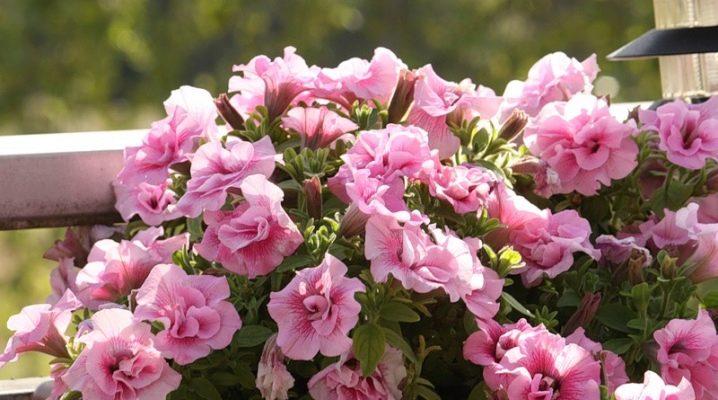
Petunia has long gained popularity among gardeners due to its unpretentiousness and beauty. But there are times when the use of this plant when decorating a site is impossible. In such a situation, flowers that look like petunia will help. These plants resemble its flower shape, but in all other respects they can differ significantly.
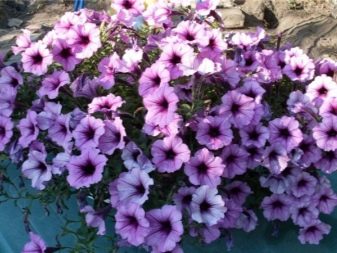

About petunia
First of all, you need to understand what kind of flower is the petunia itself.
Petunia is an unpretentious, easy-care plant that can be used just about anywhere. Designing flower beds, balconies, vertical gardening or simply filling in an accidentally formed "gap" - petunia will perfectly cope with any task.
Its delicate flowers are distinguished by a wide range of shades, a pleasant aroma, which has properties beneficial to humans. For example, it improves the functioning of many body systems such as the circulatory, cardiovascular, central nervous system and digestive system. The smell of petunia flowers can relieve a person from headaches. She also has more utilitarian properties, for example, to drive away mosquitoes.
Petunia can be distinguished from similar relatives by its appearance: it has a round green stem, densely covered with small twigs. The height is small - from 20 to 70 cm. The leaves of the flower are medium-sized, the arrangement is different in sequence. Foliage is often difficult to see due to the abundance of flowers.
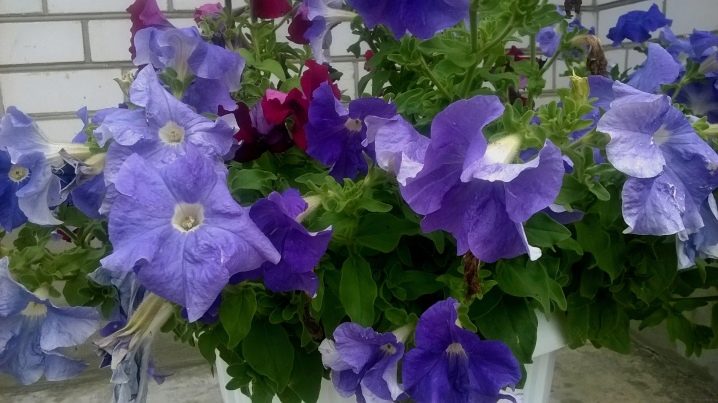
Petunia flowers in their shape resemble gramophone and are located in the axils of the leaves. They can have a smooth or corrugated edge and are incredibly rich in shades.
Petunia belongs to perennial plants, but some growers grow it as an annual.
After sowing, the plant rises quickly: after a week and a half. After another seven days, the first leaf appears. After the appearance of six leaves (plus two to three weeks), petunia can be transplanted to permanent residence. The adaptation does not last long, and after it the flower begins to grow. About a month after planting, buds will appear, after which the petunia will bloom.

Original or copy?
There are quite a few plants similar to this beauty, and they also have their fans. In order not to get confused in the variety of similar plants, you need to know their distinctive features. Among the "twins" of petunia, you can most often find plants, which will be discussed below:
- Calibrachoa. This is the name of the ampelous flower, which is very similar to petunia in appearance, but differs from it in the structure of its DNA. Its flowers are smaller than those of the original, and have a so-called neck and cover the plant in large numbers. The color palette is not very diverse - mostly shades of brown and yellow. Calibrachoa stems are branched, strong, fleecy;
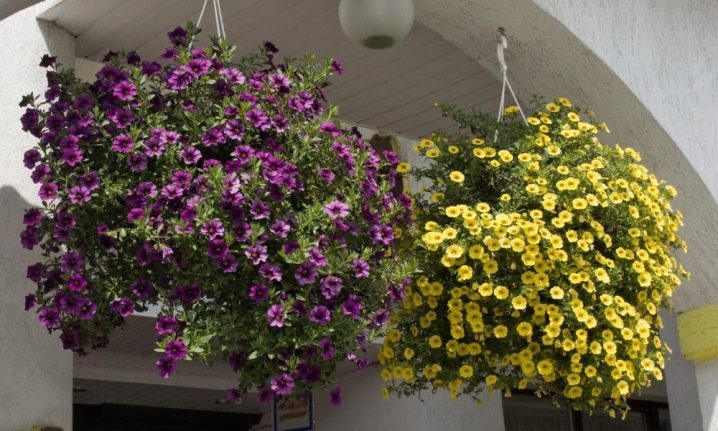
- Minitunia... Most often used as a soil or curb plant. Differs in strong branching, a large number of buds, which then turn into little flowers, and then become strong, break-resistant shoots;
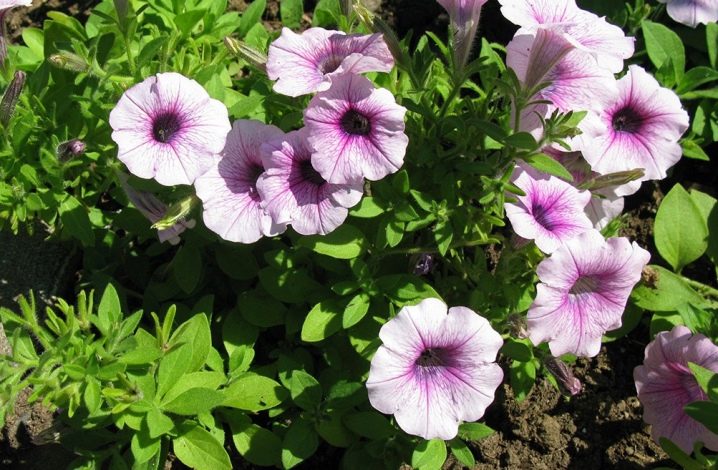
- Mirabilis. This is a branching bushy plant, the paired leaves of which have an ovoid-elongated shape. It differs in one interesting feature: flowers of different colors can appear on the same bush. They open at night, and wither with the onset of morning. When choosing mirabilis, it should be remembered that this plant must be planted in sunny areas, closed from the wind. The soil must be fertile;
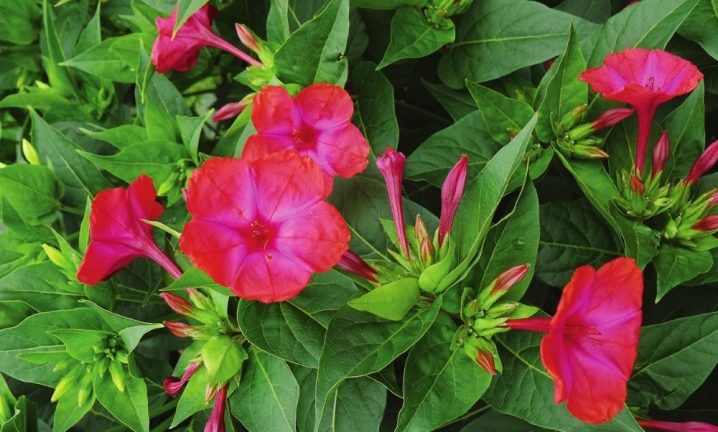
- Surfinia. A very beautiful plant, which, when in bloom, becomes like a flower ball - it is so densely covered with bright buds.
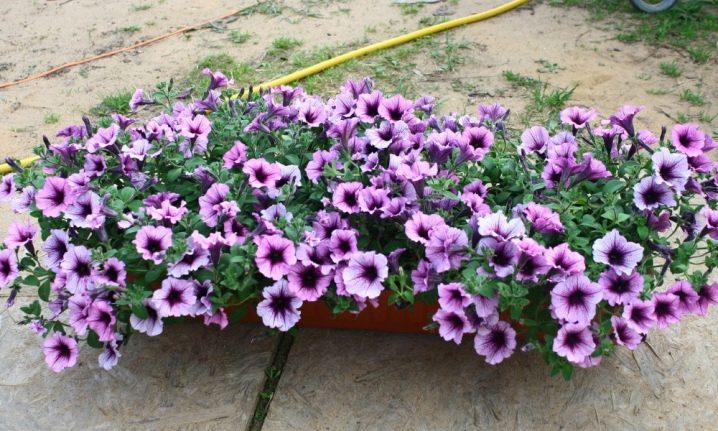
- Morning glory... It attracts with large funnel-shaped flowers and leaves resembling hearts. But this beautiful vine, capable of growing up to 5 m in length, is poisonous, and you need to remember this when choosing it for your site.
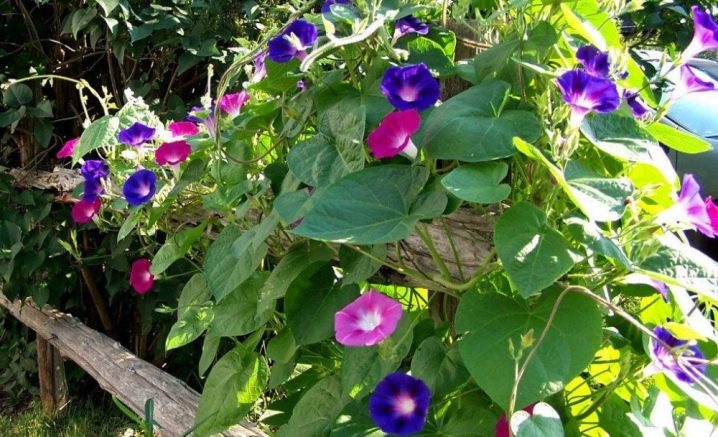
- Datura. They are erect annuals that form a bush. The flowers are single, large, located in the branches of the stem.
Datura is unpretentious, but poisonous, as indicated by its very name, so you need to handle it carefully.
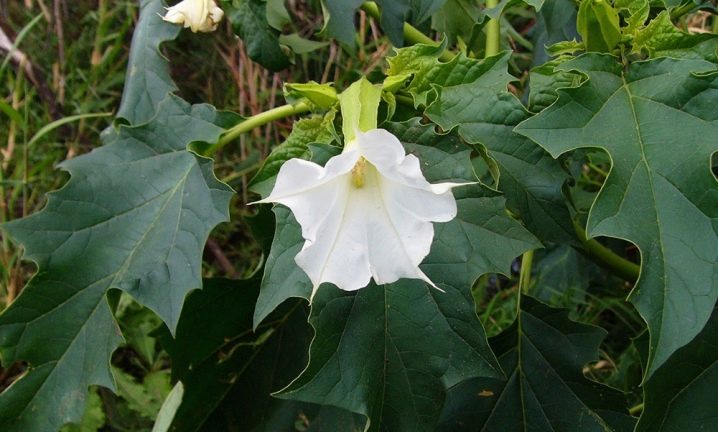
- Lavatera. Differs in spectacular flowers, which are represented by pink, white, purple shades, while they shine with silk. The leaves are spatulate and hairy. Blooms for a long time.
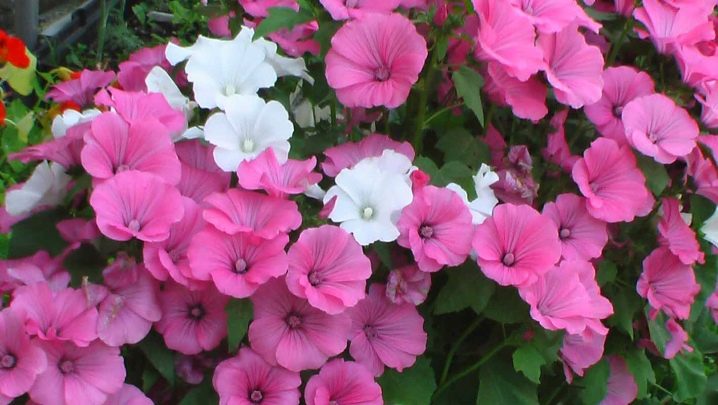
- Brugmansia. The stems of this plant become covered with bark over time. The unusual color of flowers (petals of different shades) attracts attention.
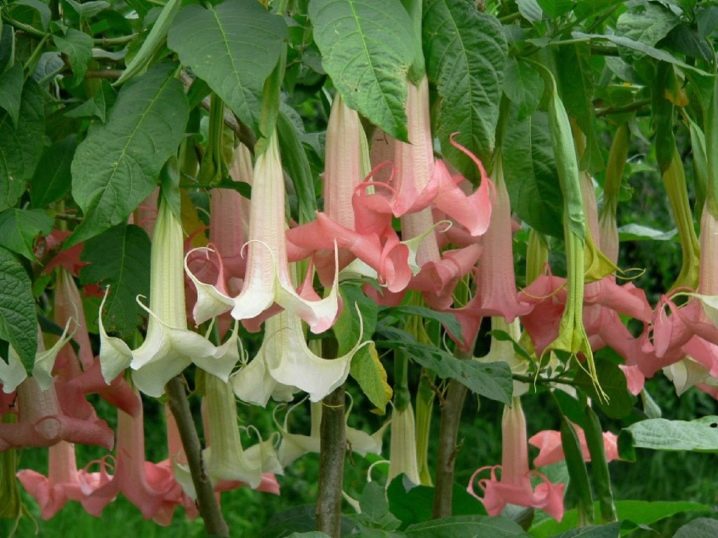
- Fragrant tobacco. These erect, branched bushes are familiar to many. Tobacco leaves are large with a dark green color. The flowers are rather big, they resemble a funnel. A distinctive feature of this plant is that it blooms only in cloudy weather.
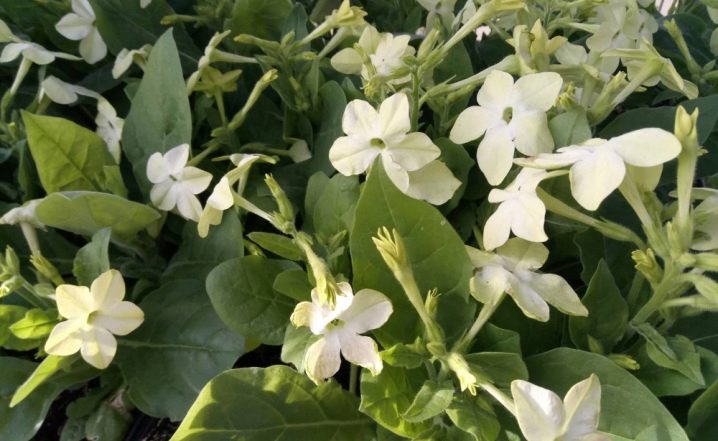
- Thunbergia. A beautiful climbing plant. Can be up to 6 m in length. Growth is fast, but it needs support for normal development.
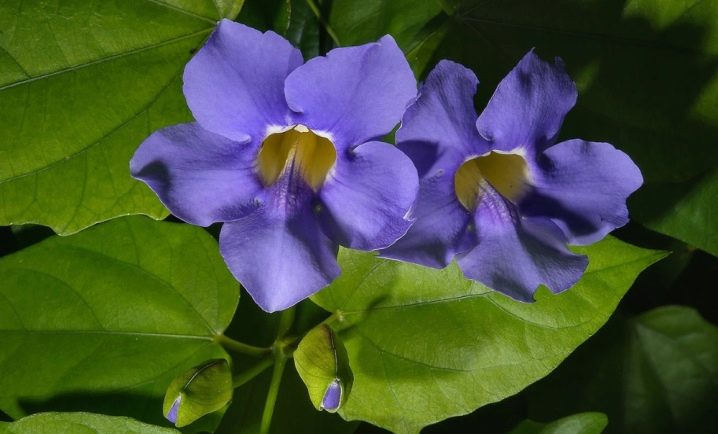
- Campsis. This plant also belongs to the genus of lianas. It differs in that its stem becomes covered with bark over time. In addition, this species is deciduous, so there is no need to be scared when suddenly the plant begins to shed its leaves - this is not a sign of illness, but a normal phenomenon. The plant is endowed with an abundance of flowers in the form of gramophones of various colors, and the pinnate leaves make this vine very attractive.
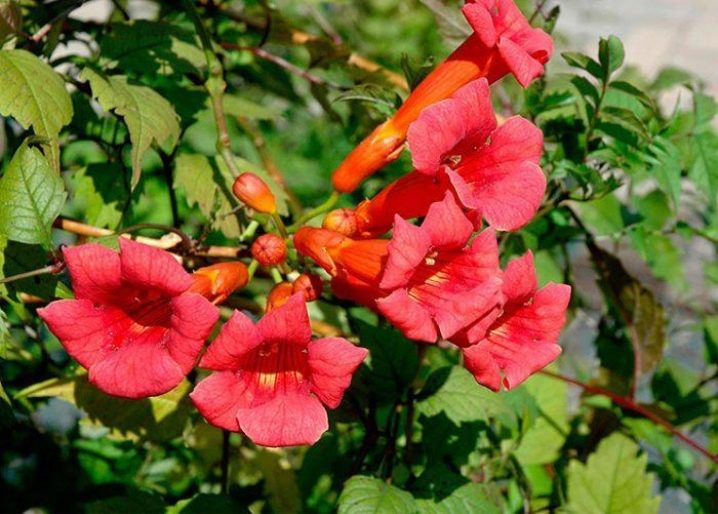
- Siningia. A short plant with bell-shaped flowers and thick leaves that resemble velvet.

- Streptocarpus... Up to 100 flowers can appear on the bushes of these plants at the same time. Wrinkled oval leaves of streptocarpus form a rosette.
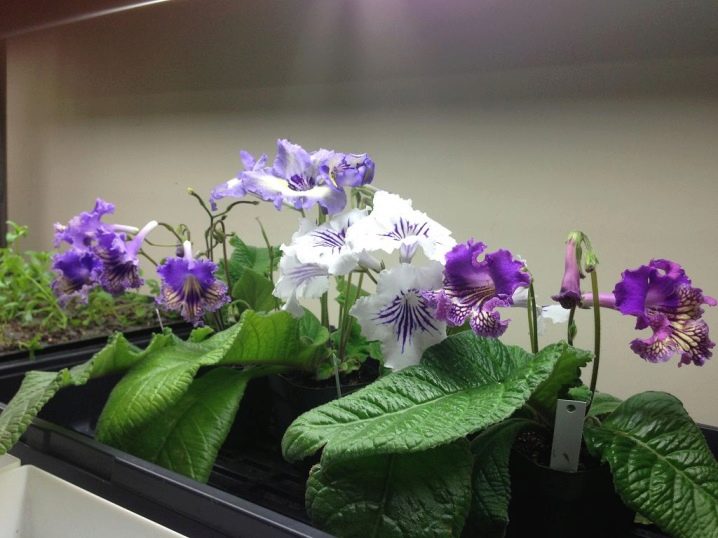
- Phlox Drummanda. The stem of this bushy plant is branched, the leaves are oval-lanceolate.
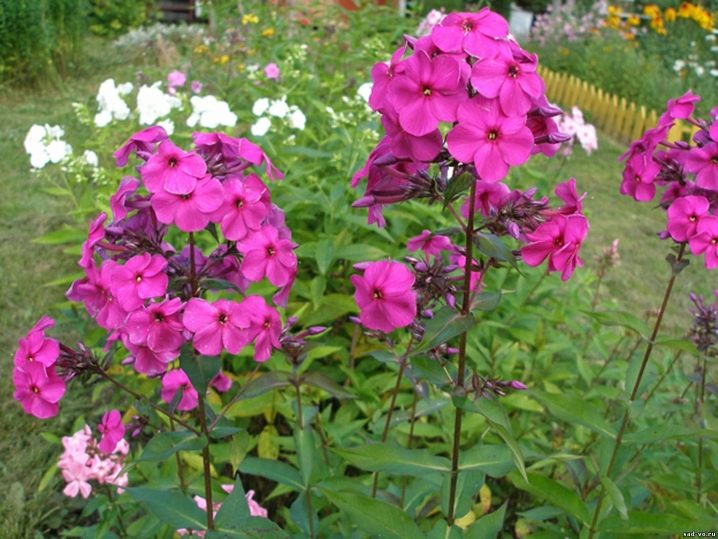
How to care?
These are rather unpretentious plants, because they do not need to create any special conditions. Timely watering, regular spraying, top dressing, pest control - these standard measures will be enough.
However, there are some nuances that need to be taken into account when planting plants so that they take root and please with abundant flowering.
- Calibrachoa doesn't like open spaces. Although its shoots are not afraid of the wind, it is better to close it from drafts.
- Mirabilis should be planted in sunny areas closed to winds.
- Lavatera is not particularly demanding on the soil, it tolerates drought and drafts.
- Tobacco requires a fertilized, moist, fertile soil. It is not susceptible to diseases, pests bypass both it and the plants adjacent to it.
- Campsis should be planted in soil rich in minerals and trace elements.
- For shiningiyam, it is necessary to provide good illumination, but at the same time not to expose it to direct sunlight.
- Drummond phlox feels best in a semi-dark place - this keeps the brightness of its flowers for a long time.
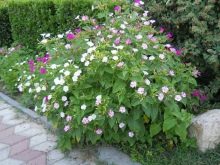
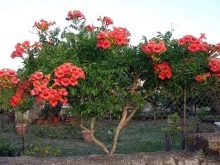
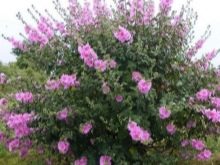
When choosing a particular plant for your garden, it is important to pay attention to some factors:
- when does flowering start and how long;
- what height and diameter the adult plant will be;
- how demanding it is on the conditions of detention;
- is it susceptible to disease.
By choosing the right plants, you can plan your garden in such a way that it will be buried in flowers throughout the warm season. Each plant has its own flowering period, shape, color. A competent combination of all these characteristics will give an amazing result.

Features of the care and cultivation of petunias, see below.







































































































The comment was sent successfully.